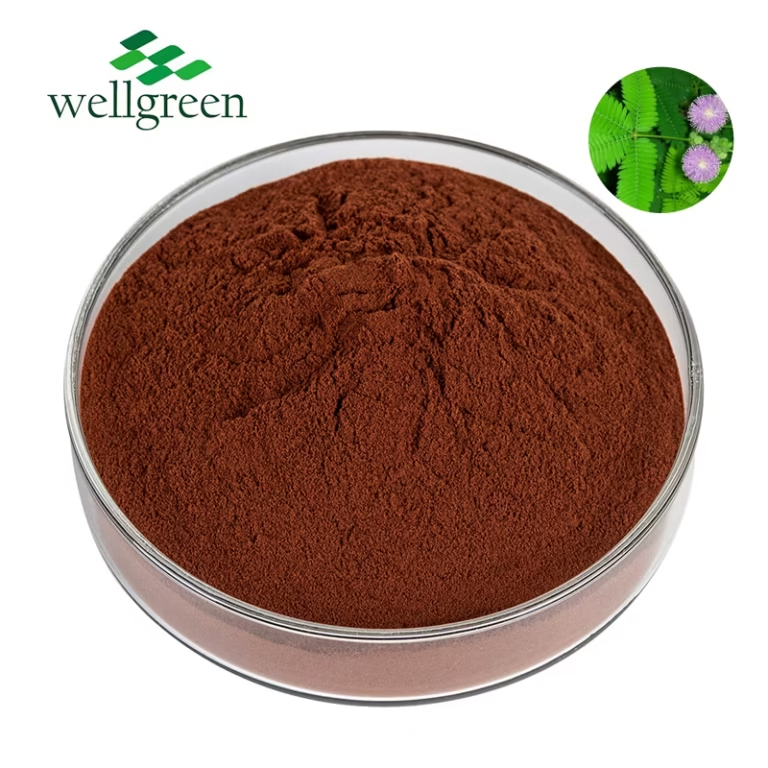Mimosa Hostilis: A Sacred Plant for Indigenous Cultures
Wiki Article

Mimosa hostilis is a significant plant deeply ingrained in the traditions of many Indigenous cultures across South America. For centuries, it has been employed by indigenous communities for its diverse spiritual and medicinal properties. The root bark, known as ayahuasca, is particularly revered for its entheogenic effects, believed to induce profound experiences that facilitate growth.
Through traditions, the plant spirit of Mimosa hostilis is invoked, guiding individuals on a quest of self-discovery and connection with their inner selves. The knowledge surrounding this sacred plant has been passed down through generations, preserving the rich cultural heritage and knowledge of these communities.
Exploring MHRB Extract: Unlocking Mimosa Hostilis's Potential
Mimosa hostilis, a lush plant indigenous to the Amazon Basin, has captured the attention of both researchers for centuries. This intriguing species harbors within its roots a potent extract known as MHRB, which has gained significant popularity in recent times.
MHRB extract is celebrated for its effects, often associated with altered states of consciousness. Ancient practices suggest a long history of MHRB use in ceremonial rituals.
- Experts continue to investigate the pharmacological properties of MHRB, seeking to uncover its full range of effects.
- The nuances surrounding MHRB usage require caution. It is crucial to consult with knowledgeable individuals before experimenting with any practices involving this powerful compound.
Exploring the Ethnobotanical Uses of Mimosa tenuiflora
Mimosa tenuiflora, commonly acknowledged as "the acacia", holds a significant position within the ethnobotany tradition of diverse tribes. Its wide-ranging properties have been harnessed for centuries in ancestral medicinal practices, as well as in rituals. The roots of this remarkable plant possess a rich spectrum of bioactive compounds believed to exhibit medicinal effects.
From alleviating ailments like pain to boosting spiritual awareness, Mimosa tenuiflora has long been honored for its profound effect on human life.
The Chemistry and Pharmacology of Mimosa Hostilis Root Bark
Mimosa hostilis root bark has a complex chemical profile, primarily known for its significant concentrations of alkaloids. Among these, N,N-Dimethyltryptamine and tetrahydroharmine are particularly important. These compounds possess a range of pharmacological activities, including mind-altering effects. The bark contains various alkaloids, including harmine, which may contribute to its comprehensive pharmacological profile.
The traditional uses of Mimosa hostilis root bark span a variety of medicinal purposes, particularly in South American cultures. However, it is crucial to acknowledge that scientific research on the effectiveness of these uses remains restricted.
Harnessing the Power of copyright with Mimosa Hostilis
Mimosa hostilis, a tree native to South America, has captured the interest of researchers and individuals alike for its potent chemicals, particularly dimethyltryptamine, or copyright. copyright is a powerful copyright substance known for producing intense experiences. By consuming the bark of Mimosa hostilis, one can journey into the realms of copyright-induced experiences. It is crucial to remember that copyright is a powerful substance and should be treated with caution.
- Responsible use is paramount, and seeking guidance from experienced individuals or knowledgeable sources is highly recommended.
- The pathway of copyright can be both rewarding but also potentially overwhelming. It is essential to prepare both mentally and physically for the consequences that may arise.
copyright from Mimosa hostilis offers a unique opportunity to journey within the depths of consciousness, possibly leading to existential growth and understanding.
Moral dilemmas Using Mimosa Hostilis
The utilization of Mimosa hostilis for traditional purposes raises a myriad of philosophical questions. While some argue that its historic significance warrants respect and tolerance, others oppose its use due to potential harmful consequences. It's crucial to consider this complex issue with sensitivity, taking into account the social contexts and potential risks. A informed perspective is essential for navigating the ethical landscape surrounding Mimosa hostilis.
Raising Mimosa Hostilis: A Guide for Growers
Embarking on the adventure of cultivating Mimosa Hostilis can be a gratifying experience for the dedicated grower. This fascinating plant, native to tropical regions of the Americas, has attained significant notoriety in recent years due to its peculiar properties. Before your cultivation mission, it is crucial to understand the specific requirements this plant demands to thrive.
- Guaranteeing adequate sunlight is paramount for healthy Mimosa Hostilis growth. These plants flourish in unfiltered sunlight, ideally receiving a minimum of six hours per day.
- Ensuring well-drained soil is essential to prevent root rot, a common issue that can devastate your plants. A mixture of clayey soil with composted matter is ideal.
- Frequent watering is necessary, but be mindful not to overwater your Mimosa Hostilis. Allow the top inch of soil to dry before providing another irrigation.
The Shamanic Traditions Surrounding Mimosa Hostilis
Deep within the ancient forests of South America, the shrine of vision have been practiced for generations. Among these powerful allies is Mimosa Hostilis, a sacred plant revered by the shamanic traditions of indigenouscommunities. It holds within its bark a river of power, guiding healers on their journeys into the otherworld.
The traditionalshamans understand that Mimosa Hostilis is not simply a herb; it is a portal between worlds, connecting us to the universal energies that flowwithin all of creation.
Confronting Legal Issues with Mimosa Hostilis
The legal status of mimosa hostilis differs significantly from one jurisdiction to another. That means that the legality of possessing, using, or raising this plant depends on your specific area.
Furthermore, laws and regulations concerning mimosa hostilis are constantly changing. It is therefore vital that you carefully research the specific legal framework in your region.
- Seeking advice from a legal professional who specializes in plant-based substances laws is highly recommended.
- Staying informed about any changes to the law can help you prevent any potential legal problems.
Mimosa Hostilis and Spiritual Exploration: A Journey Inward deepening
The ancient wisdom whispered through the rustling leaves of Mimosa Hostilis calls to seekers on a sacred quest. Venturing upon this path is to reveal hidden dimensions within, where the veil between worlds blurs. It's a transformative experience that enlightens the soul, revealing truths sleeping beneath the surface. As you blend with the essence of this sacred plant, be prepared for visions that reshape your perception.
- Welcome the unknown with an open heart and a eager mind.
- Surrender all expectations and allow yourself to be swept away by the current.
- Remember, this is a quest of self-discovery. Have faith in your own wisdom.
The wisdom gained through Mimosa Hostilis vibrates long after the experience has ended. It is a gift that can alter your life in profound and eternal ways.
Understanding the Challenges and Benefits of Mimosa Hostilis
Mimosa hostilis is a plant native more info to South America, gaining increasing attention for its potential pharmacological properties. While it contains valuable compounds like copyright, responsible for its psychoactive effects, it's crucial to approach this plant with awareness. Understanding both the hazards and the positive aspects of Mimosa hostilis is essential for safe and informed use. Potential side effects can include psychological distress, emphasizing the need for thorough research, responsible consumption, and a controlled environment.
- It's important to consult with a healthcare professional before using Mimosa hostilis or any products derived from it.
- Proper dosage is crucial to minimize potential risks.
- Be aware of the legal status surrounding Mimosa hostilis in your locality.
- Always prioritize safety and well-being when exploring the use of this plant.
 Report this wiki page
Report this wiki page